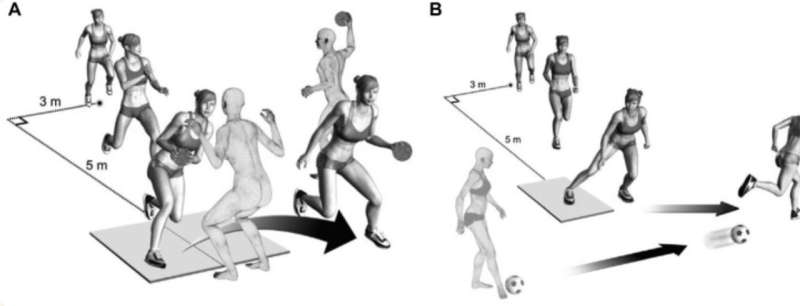
A study conducted at the University of Jyväskylä Faculty of Information Technology’s Digital Health Intelligence Laboratory used machine learning to predict anterior cruciate ligament injuries. The largest data set collected for this purpose was used, but the results show that even machine learning cannot develop a sufficiently effective model to predict injuries in individual athletes.
Anterior cruciate ligament (ACL) injuries are common in team sports and cutting sports. Preventing them is important for both elite and amateur athletes. Multiple injury risk factors have been recognized in previous research, but the actual prediction of ACL injuries is still a matter of controversy.
The University of Jyväskylä’s Digital Health Intelligence Laboratory in collaboration with researchers from Norwegian school of sports sciences tried to predict the risk of ACL injury in individual athletes using machine learning.
“The machine learning methods used in the study managed to predict injuries with about 65% overall accuracy. The result was statistically significant, but in practice the predictive ability is so low that it is not useful in practical clinical assessment of ACL injuries,” says Susanne Jauhiainen, who conducted the study.
Nowadays, developing AI applications and conducting different experiments by using machine learning is relatively easy due to the usability and accessibility of tools. On the other hand, they also make it easy to produce promising prediction and classification models by chance.
“A central part of the study was also to develop a process that would ensure the quality and reliability of the results for comprehensive testing of AI models. This approach has already been applied in a previous injury study conducted with the UKK institute.”
The data set used in the study is the largest in the field
The data used in the study is a part of the Norwegian School of Sports Sciences’ extensive injury research project and is the largest data set collected in the field.
The research data consisted of female handball and football professionals. The total number of studied athletes was 880.
Despite the large and comprehensive data set and the use of various machine learning methods, the study could not predict ACL injuries well enough in practice.
“Even though we sort of failed this time, it can’t be said that machine learning and artificial intelligence can’t still predict injuries in the future. The result is useful because it will help injury researchers move towards collecting more relevant measurements,” Jauhiainen concludes.
The use of machine learning and data in sports and exercise applications is increasing rapidly and the results obtained now provide valuable insights into the opportunities and challenges for method development in this field.
The research was published in The American Journal of Sports Medicine.
More information:
Susanne Jauhiainen et al, Predicting ACL Injury Using Machine Learning on Data From an Extensive Screening Test Battery of 880 Female Elite Athletes, The American Journal of Sports Medicine (2022). DOI: 10.1177/03635465221112095
Journal information:
American Journal of Sports Medicine
Source: Read Full Article
